The Movies of Studio Ghibli, Ranked From Worst to Best
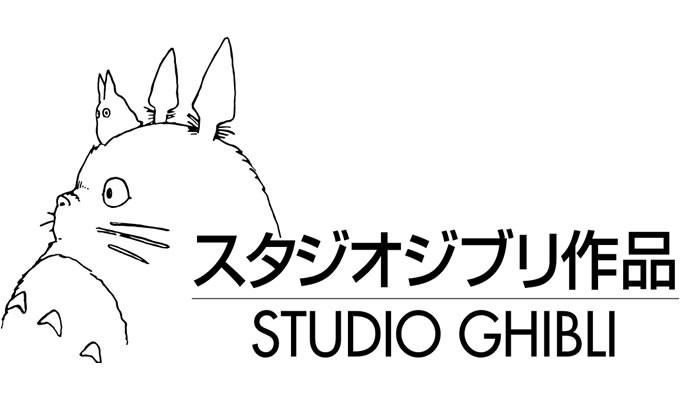
This week marks the 30th anniversary of the founding of Studio Ghibli, possibly the world’s most revered animation house. It’s a bittersweet occasion, given that the company’s activities have been on a “hiatus” since last year, due to the retirement of founder Hayao Miyazaki and the disappointing box office performance of several of its more recent films. Still, that’s no reason to dampen any celebration of Ghibli’s beloved output.
The studio is respected the world over for its lush animation, attention to detail, and the way its movies can soak its audiences in a mood without any effort at all — a trait many find lacking in most American cartoons. Ghibli’s stories take viewers of all ages seriously, never let commercial concerns get in the way of imagination, and more often than not incorporate female characters in a way that puts the rest of the film industry to shame, animated or live action.
To observe Studio Ghibli’s 30th birthday, I’ve taken up the task of ranking its entire oeuvre of feature films. Feel free to disagree with the placements — that’s half the fun of a ranked list.
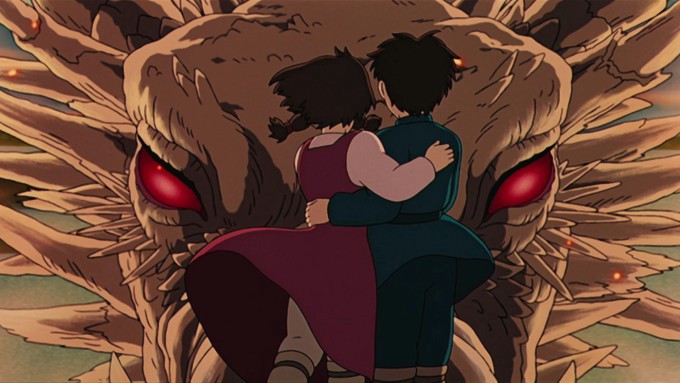
Studio Ghibli
22. Tales from Earthsea (Dir. Goro Miyazaki, 2006)
Rankings can often seem frustratingly arbitrary, or change depending on the writer’s preferences from one day to another. But from the moment I started this list, there was no question of what would be at the bottom. Tales from Earthsea holds the dubious distinction of being Ghibli’s only outright bad (terrible, even) movie. The junior Miyazaki turns Earthsea into the most generic of fantasy settings, and a stage for bland good-and-evil conflict between characters who are either cardboard or outright unlikable (the ponderous shitheel Prince Arren is unquestionably the worst Ghibli lead). The pleasingly loosey-goosey Ghibli story approach here decays into a grotesque, senselessly dull plot. Urusla K. Le Guin had previously turned the studio down several times when they approached her about adapting her books, and the instinct proved sadly well-founded.
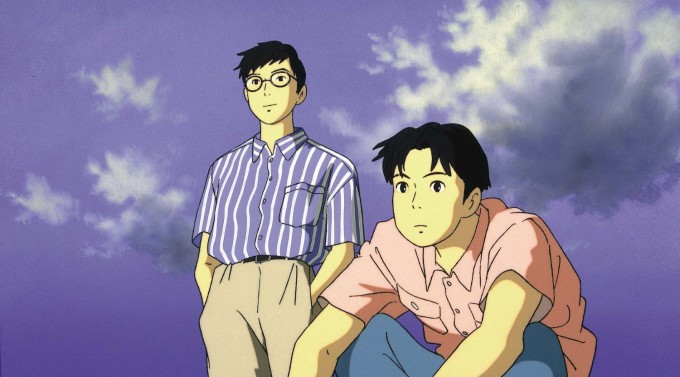
Studio Ghibli
21. Ocean Waves (Tomomoi Mochizuki, 1993)
Produced for television as a cheap training exercise for younger, newer staff members, this film nonetheless ran over both budget and schedule. It’s hard to understand how, since the result is identical to every other TV anime from the time. That goes both in terms of aesthetics (though the animation is perhaps smoother than that of its peers) and of story. It’s a halfhearted love triangle that’s more about an extended day trip to Tokyo and sends the very odd moral that, as a friend of mine put it, “you should pursue love interests even if they turn out boring or shallow, because you should always stick to what you initially wanted.” A terribly slight piece of work.
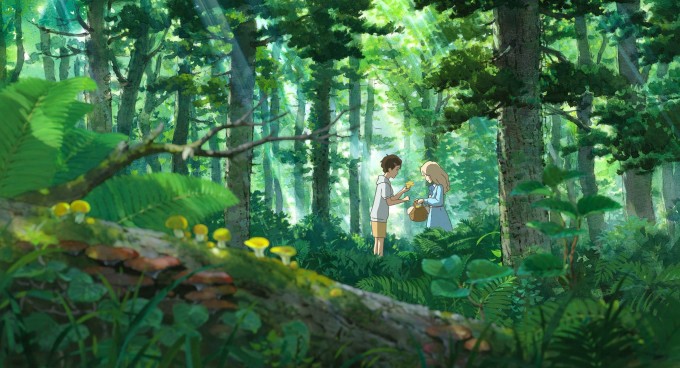
Studio Ghibli
20. The Secret World of Arrietty (Hiromasa Yonebayashi, 2010)
19. When Marnie Was There (Hiromasa Yonebayashi, 2014)
Yonebayashi’s two contributions both seem like products of a rival studio attempting to emulate the Ghibli formula (while somehow getting away with copying their character design house style) without quite understanding its nuances. Both films are pleasant, with fleeting moments of deeper beauty or thematic heft. And they have their solid qualities — Cécile Corbel’s score for Arrietty is terrific, and Marnie’s ghost story is a notable break from the studio’s usual fare. But neither movie amounts to all that much in the end.
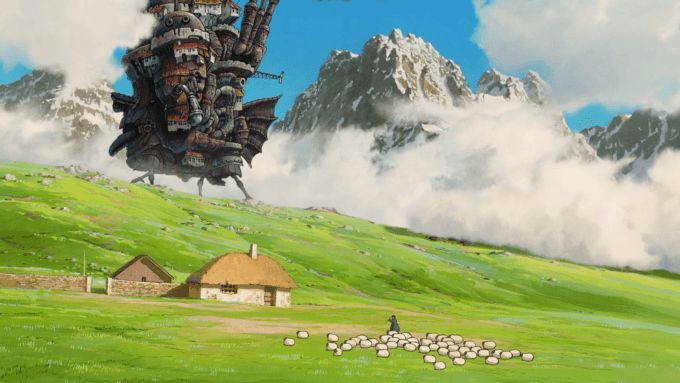
Studio Ghibli
18. Howl’s Moving Castle (Hayao Miyazaki, 2004)
Miyazaki famously works without screenplays, essentially half finding his films as he makes them — even the ones adapted from books. Historically, this has worked out stunningly well for him, but his lower-tier titles on this list are the exceptions. Howl is not free-flowing but formless, its strange story twists too random and unmotivated (and unable to be excused with “well there’s magic afoot”). Even though Miyazaki is passionately anti-war and incorporates that idea into much of his art, the theme feels tacked on here, the darker shades of the title character’s actions too much at odds with everything else that’s going on. Still, it is gorgeous, the eponymous castle a clever visual feat.
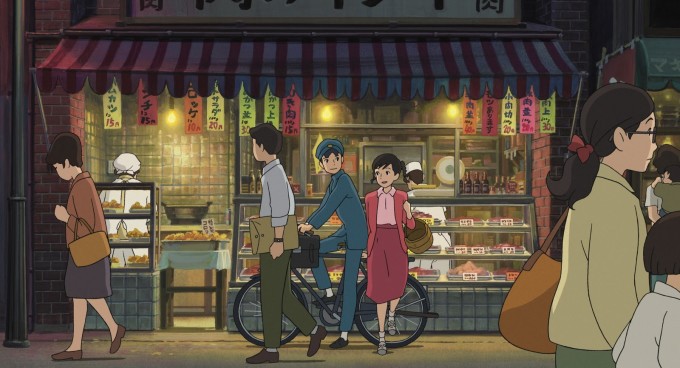
Studio Ghibli
17. From Up on Poppy Hill (Goro Miyazaki, 2011)
In a vast improvement over his debut feature, the junior Miyazaki turns in a quite nice piece. Its uncomplicated story about a school trying to save its old clubhouse serves as a vector for an effective mood piece about Japan in its postwar years. Ghibli is often praised for its ability to capture little, everyday slices of life, and Poppy Hill is basically one big string of those little moments. So it’s most unwelcome that the plot suddenly snarls at a late stage with a weird-ass twist: The two romantic leads might be brother and sister! Even stranger is how the incest plot is resolved not too long after, raising the question of what point it had at all.
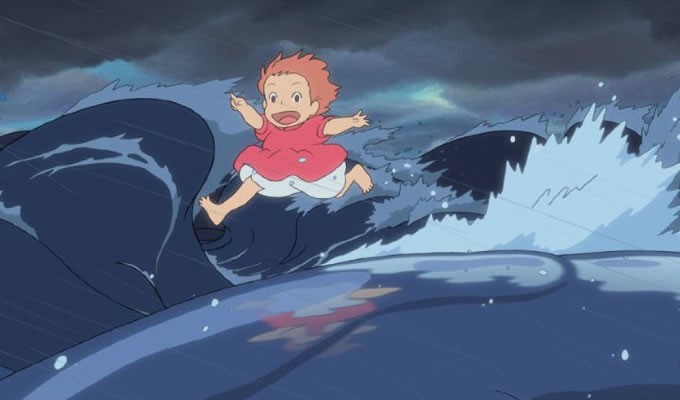
Studio Ghibli
16. Ponyo (Hayao Miyazaki, 2008)
Ponyo has the same wonky story issues I previously mentioned with Howl. People have defended such criticism of Ghibli by claiming that the tone, visuals, and characters are always more important than the stories. Which is absolutely true, but in this case, the tone is nothing notable and the character work is nil. Ponyo’s emotional intelligence is on the level of its preschool-aged leads. Which isn’t necessarily a bad thing, but it does mean that a 100-minute running time is horribly stretched. It comes across as an excuse for Miyazaki to show off the studio’s animation talent. Much was made of how the movie defied modern convention and returned to an entirely hand-drawn model. The result is indeed often astounding to behold, but still disappointing to think about.
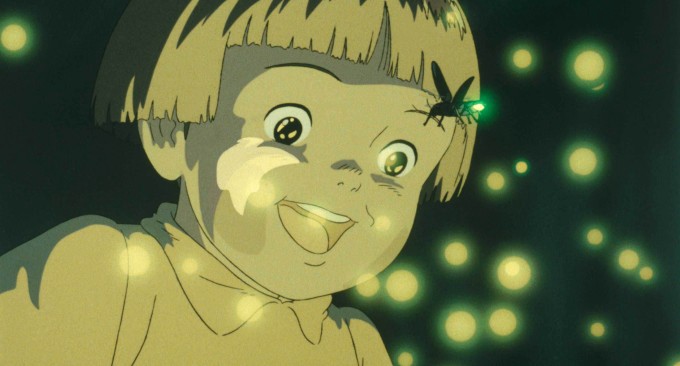
Studio Ghibli
15. Grave of the Fireflies (Isao Takahata, 1988)
The single biggest surprise I got from rewatching numerous Ghiblies for this article was that Grave of the Fireflies is not nearly as great as I remembered it being. The movie has gained an almost intimidating reputation as a heartbreaker. But I found only a fraction of that emotion to be truly authentic or earned. The entire story is built to sadden the viewer, everything targeted with the eventual death of a cute little girl in mind. It’s viciously manipulative, almost to an unseemly extent — the nadir being the montage of “aw shucks, ain’t she adorable” scenes that immediately follows Setsuko’s death.
The two young protagonists don’t seem to exist as their own characters so much as they do in the service of that weepy goal. Many of the outstanding parts of the movie precede the beat where the kids strike out on their own. The scenes that focus on life during wartime are more sincere than everything about dying. Yes, dying is sad, but the movie has nothing else to say on the subject besides that. Grave of the Fireflies is held up as a premier anti-war film, but it makes more sense when viewed through the lens of Takahata’s stated intent, which was to connect the Japanese youth of the ’80s with what their parents went through during World War II.
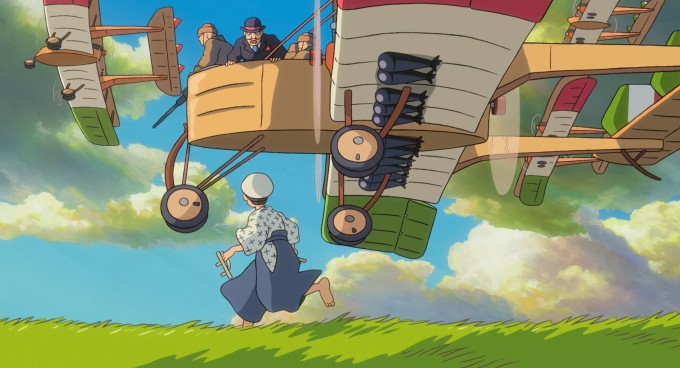
Studio Ghibli
14. The Wind Rises (Hayao Miyazaki, 2013)
Speaking of World War II and Ghibli movies I value less than most other people do, here’s The Wind Rises. It’s fitting that a story all about an artist bringing forth morally murky creations has itself come out morally murky, to a contentious critical reception. I’m not going to step into the debate over whether the film glazes over Japanese war crimes and Jiro Horikoshi’s culpability (or lack thereof) in them, because that’s not my biggest problem with it (although the message is muddled enough for me to doubt whether it was ever fully thought through). Rather, I can’t love The Wind Rises because it’s so (and I make no apologies for this pun) airless. The times in which the viewer empathizes with Jiro’s passion are scant, and the times in which they can get invested in his love story are nil. The rest of Miyazaki’s output is so widely humanistic that a narrative buried this much inside one character’s head becomes a chore.
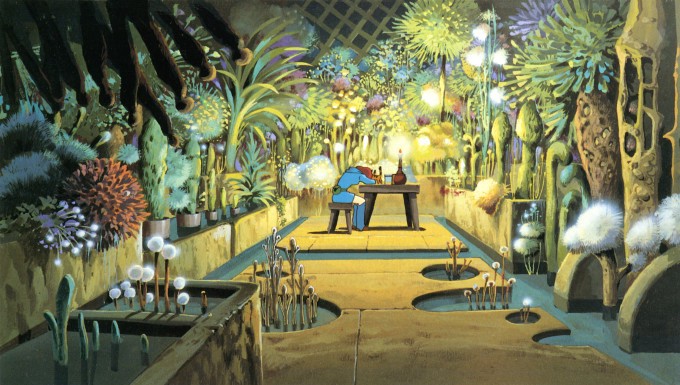
Studio Ghibli
13. Nausicaä of the Valley of the Wind (Hayao Miyazaki, 1984)
Okay, yes, this is technically not a Ghibli film. Its production and release precedes the studio’s founding by a year. But come on; if no one told you that, would you be able to tell? Nearly everyone important who worked on this movie went on to join Ghibli. And it’s my list, so I say it counts.
Though not Miyazaki’s first feature (that would be 1979’s extraordinarily fun The Castle of Cagliostro), Nausicaä is an excellent crash course in almost everything he loves: flying, environmental and anti-war sentiments, good female protagonists, morally grey conflicts, and more. It’s an excellent sci-fi romp, starting from a peaceful place and escalating to a truly epic climax (the god-warrior sequence is one for the ages). The only thing hampering the movie is that it’s based on the first two volumes of a seven-volume comic book story, and it kinda shows. It’s somehow both self-contained and feeling truncated, the ending rather abrupt. But given the messy production, that Nausicaä came out coherent is an accomplishment.
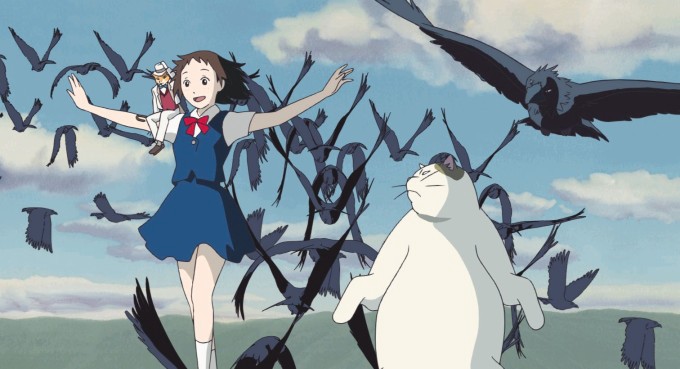
Studio Ghibli
12. The Cat Returns (Hiroyuki Morita, 2002)
Besides Ocean Waves, this has the least impressive art and animation of any Ghibli. To boot, The Cat Returns is the shortest, the least complicated, and the broadest work they’ve yet done. It’s also a complete delight, and pound for pound the studio’s funniest movie. Hence, I’d call it their most underrated. A silly story about a girl who unwittingly gets caught up with the intrigues of a kingdom full of cats, this spinoff of sorts from Whisper of the Heart (more on that later) knows exactly what it is and goes about its business with crisp efficiency. It’s a throwback to the simpler fantasy adventures the various founders of the studio made back in the ’60s and ’70s, but with considerably more verve and mischief.
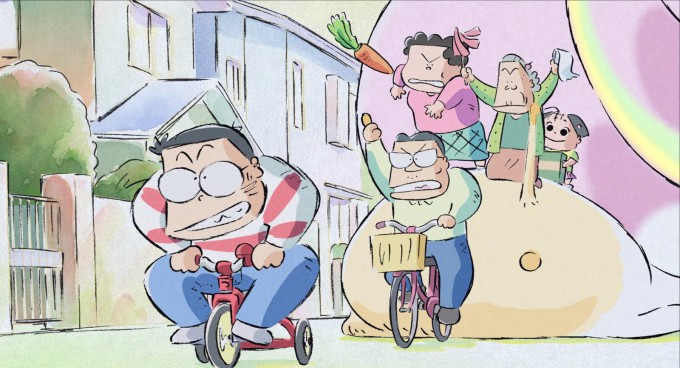
Studio Ghibli
11. My Neighbors the Yamadas (Isao Takahata, 1999)
This film’s deceptively simple artistic style belies a wonderfully sophisticated visual sensibility. The first all-digital Ghibli, My Neighbors the Yamadas takes advantage of the expansive canvas offered by a computer with images that fluidly morph and travel from one vista to the next. All of which is in service to a sequence of vignettes about a totally normal Japanese family going through totally normal situations (which generous fantastical exaggerations). But even that straightforwardness is deceptive. References to folklore abound, as do quotes from old poets such as Bash?. The Yamadas are a study in the push-pull between traditional ideals of family and the demands of modern life. Despite that specificity, any family can look at this and see themselves clearly represented.
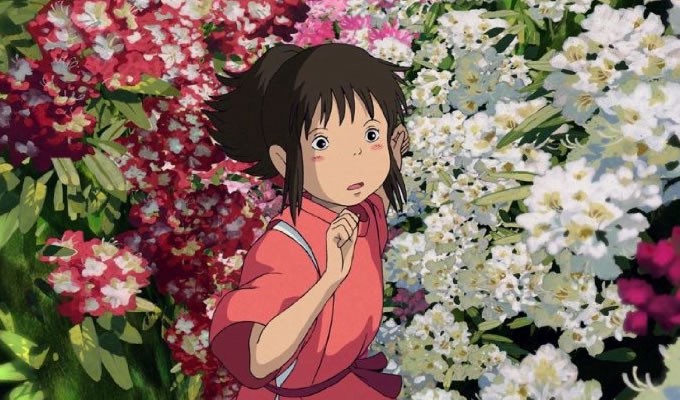
Studio Ghibli
10. Spirited Away (Hayao Miyazaki, 2001)
Even though it’s in the better half of the list, this might be a controversial placement for Spirited Away, if only because it seems to be widely agreed upon as the top Miyazaki and the top Ghibli. Which is not to say that it isn’t great, because it is. The incredible, fully-realized world of the bathhouse might be the single best setting the studio ever devised. The theme of the old world versus the new is literalized, as old superstitions and work ethic prove to be the key for a contemporary young girl both to survive and to grow as a person. But I don’t love the characters as much as I do in most of the films ranked higher than this, and after Chihiro escapes the bathhouse, the movie doesn’t so much come to its close as it does putter to an eventual halt. Those quibbles aside, I believe that this is a fitting culmination of all the things Miyazaki loves.
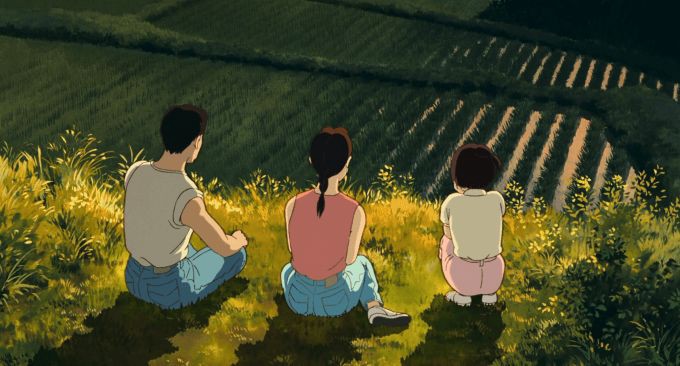
Studio Ghibli
9. Only Yesterday (Isao Takahata, 1991)
Frustratingly withheld from any home video release by Disney, animation fans have long championed this unusual entry in the Ghibli roster. Takahata’s team took pains to make their animation more lifelike, adding creases and lines to the characters and drawing their speaking bits to match prerecorded dialogue (the opposite of standard practice in anime). It’s the studio’s zenith in its usage of tiny details. Those subtleties flesh a good deal of depth of out the film’s plot, about a woman figuring out what she wants from herself while on a trip in the country. Again, it’s the simpler, older ways of life getting their due. Ghibli directors are excellent at doing this without appearing blinkered by nostalgia, probably because they don’t simultaneously denigrate the present day — just point out that it perhaps isn’t accommodating to everyone.
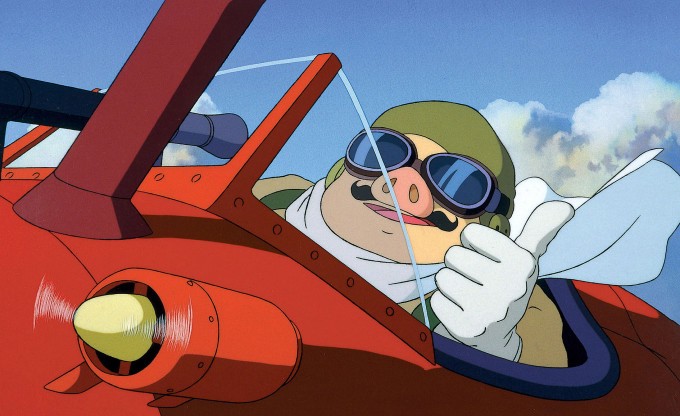
Studio Ghibli
8. Porco Rosso (Hayao Miyazaki, 1992)
Perhaps the reason I wasn’t as impressed by The Wind Rises’ study of war and airplanes was because I thought this movie already said such things much better. It probably helps that there’s a lot more actual flying in this one. And that they’re the most thrilling flight sequences Miyazaki ever directed. “War turns men into pigs” is an on-the-nose conceit, but Porco Rosso makes it work. It’s a red-blooded action movie that also knows exactly when to slow its pace and has heavier, legitimately mature musings on its mind.
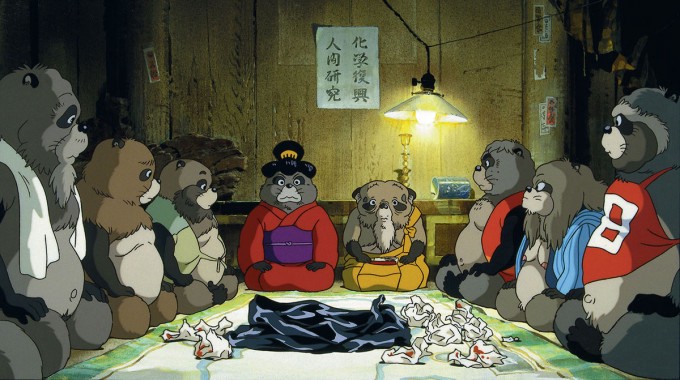
Studio Ghibli
7. Pom Poko (Isao Takahata, 1994)
If someone had told me years ago that the Ghibli film to bring me closest to tears would be the one about magic raccoon dogs with shapeshifting testicles, I would have been skeptical. But Pom Poko finishes off a long string of bravura sequences with a stunner, in which said magic raccoon dogs use their powers to conjure a massive illusion of the past. It’s a reminder to the humans they’re in conflict with about everything they’ve paved over in their rush of progress. And then both humans and raccoon alike begin to recognize their family members in the vision, and it’s like a knife in the chest.
Pom Poko is overlong and repetitive in parts, but it masterfully spins a serious topic (environmental destruction) into an immensely humorous yarn, and then uses that spirit of fun as a springboard to deeply affecting tragedy. And again, all of this is about raccoon dogs with shapeshifting testicles. A group, by the way, which consists of a terrific array of different personalities in alternate cahoots and bickering with one another. Unlike most other Ghiblies, there’s no clear protagonist, and this film’s sense of community is lived-in and vivid.
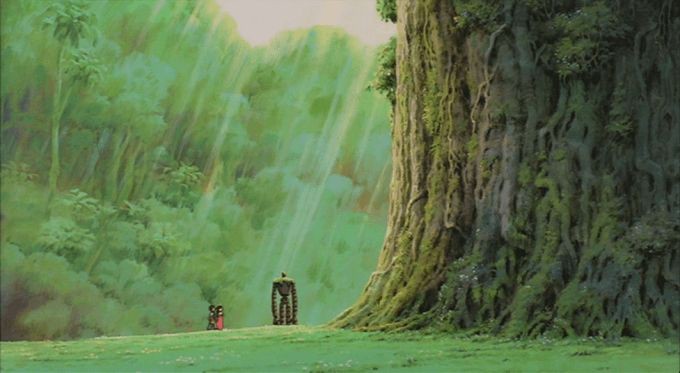
Studio Ghibli
6. Castle in the Sky (Hayao Miyazaki, 1986)
Castle in the Sky is a completely perfect adventure film. There is not a single wasted scene or beat in the entire thing. A rollicking good time from beginning to end, Ghibli’s first official feature immediately staked a claim for the studio as a place of formidable talent. Everything about Nausicaä feels like a test run for this — the mythic backstory, the tranquil start, the mounting danger, the idea of a military force seizing ancient power for ill will. But Castle knows where it’s going, and thus goes further than Nausicaä, taking its vibrant characters on a journey that feels too huge for a mere two hours, but which fits very comfortably within that frame. This is the kind of movie that aspiring filmmakers should study.
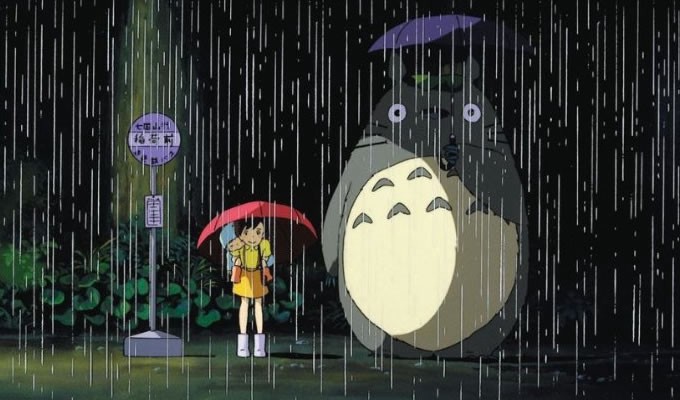
Studio Ghibli
5. My Neighbor Totoro (Hayao Miyazaki, 1988)
It’s a well-worn joke that pairing this film with Grave of the Fireflies as a double feature in its original theatrical release must have made for quite the tonal about-face. But it’s interesting to seriously contrast how My Neighbor Totoro approaches the way children experience tragedy (or the possibility of it) against how its partner film does the same. Where Fireflies is heavily manipulative, Totoro is amazingly subtle. And the darker elements never override the film’s pervasive sense of childhood wonder. The iconic scenes and images are innumerable — Totoro and the sisters in the rain, the nighttime flight around the massive growing tree, the arrival of the Catbus, so on and so forth. Plus, it’s the second-funniest Ghibli film.
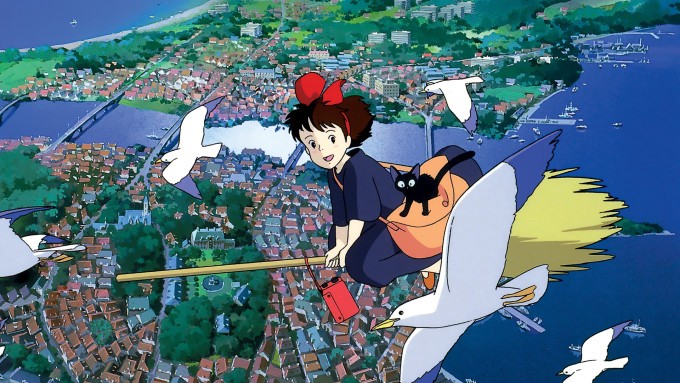
Studio Ghibli
4. Kiki’s Delivery Service (Hayao Miyazaki, 1989)
When I saw Kiki’s Delivery Service as a teen, I dismissed it as lightweight fluff. When I saw it again years later, now a 20-something and having recently moved out of my family home to live on my own for the first time, I recognized how dead-on it is about so many things. It’s a brilliant parable for the process of becoming self-reliant, figuring out just what kind of a person you are, and leaving childish things behind. Plus the English dub features one of Phil Hartman’s last performances (*tears*).
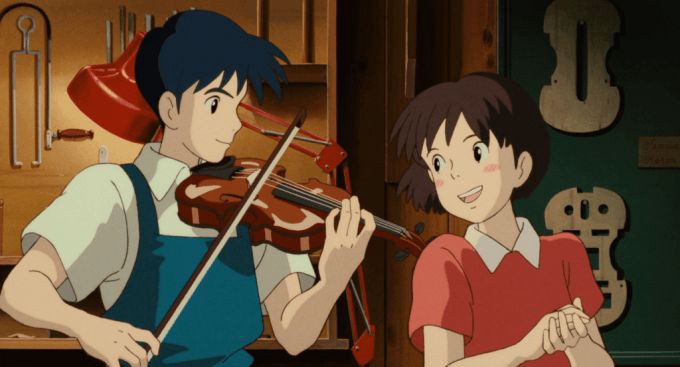
Studio Ghibli
3. Whisper of the Heart (Yoshifumi Kondo, 1995)
The founders of Studio Ghibli hoped that Kondo would be the one to lead their studio into the new century. Instead, the poor guy worked himself to death, leaving this his only feature. Watching Whisper of the Heart’s effortless humanity makes one wistfully wonder at what might have been. But we still have this lovely exploration of adolescent creativity and uncertainty. Much of what makes Whisper of the Heart great is difficult to put into words. Not enough people have watched it, so placing it so high on this list may be baffling to many. But its tone is singular, and its understanding of young people without pandering to or idealizing them is unsurpassed.
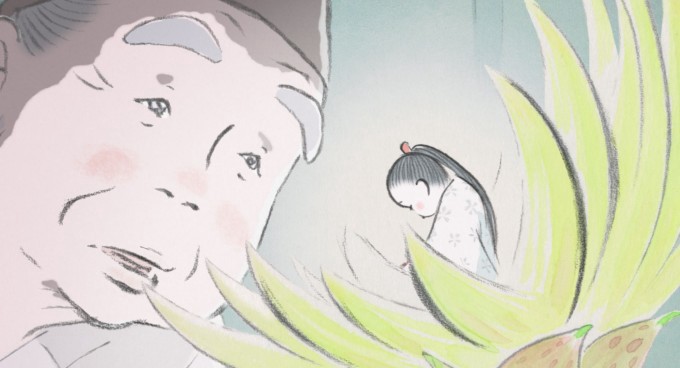
Studio Ghibli
2. The Tale of the Princess Kaguya (Isao Takahata, 2013)
Without exaggeration, one of the best-looking animated films yet made, probably to ever be made. It’s not just that the watercolor art is so distinct and consistently gorgeous; Takahata expertly bends reality to reflect the main character’s state of mind. The world sharpens and details itself as she grows older, and when she experiences massive distress, everything disintegrates into an impressionistic scribble of movement that’s breathtaking to watch. Many Ghibli films are about young people self-actualizing, and Kaguya marries that to fairy tale story logic in a unique, compelling way. And like Pom Poko, all of it builds to a dramatic, heartbreaking finale, one which serves as a flawless statement on life’s beautiful ephemerality.
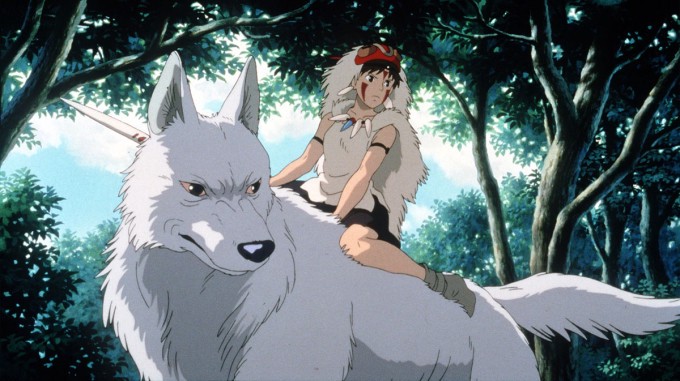
Studio Ghibli
1. Princess Mononoke (Hayao Miyazaki, 1997)
One of the best fantasy epics in cinema history (eat your heart out, Lord of the Rings), Princess Mononoke is everything loved about both Miyazaki and Studio Ghibli distilled into two-plus hours. Memorable, fascinating characters. Unparalleled craft (I’m not sure the studio ever topped the character animation or action cinematography they pulled off here). A legitimately complex approach to differing worldviews and motivations. An environmental warning that remains relevant.
In a departure from the studio’s generally family-friendly fare, this movie is unabashedly, graphically violent. Its viciousness likely helped play a role in anime’s increasing appeal to older audiences in the latter half of the ’90s. But none of it is gratuitous. Rather, it reinforces the film’s thematic concerns — all about bodies, and what we do both to them (and the world that supports them) and to save them. And animation itself is about the body; it’s the art of movement (you could also argue that this doesn’t really set the form apart from cinema as a whole). Princess Mononoke is a evocative, exhilarating, tragic, disquieting, and ultimately cathartic experience.